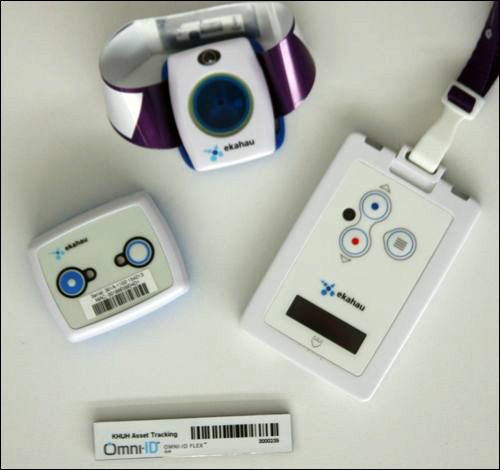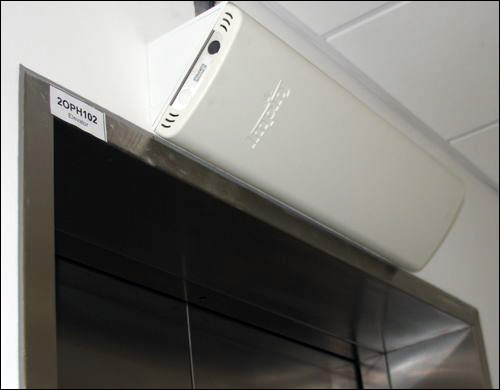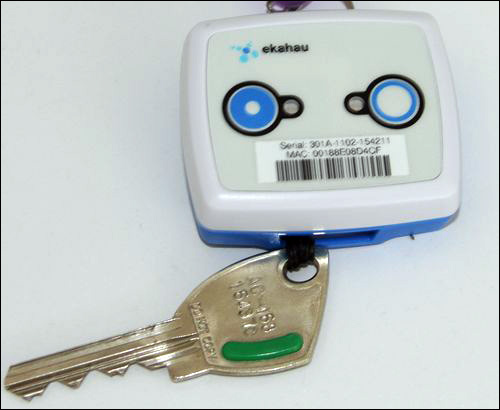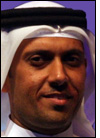When management at Bahrain’s King Hamad University Hospital (KHUH) was considering technology alternatives for tracking assets, employees and patients, they had a number of choices available to them. These ranged from real-time location systems (RTLS) to passive RFID tags—all of which offered certain benefits, says Major Sheikh Khalid bin Hamad Al Khalifa, KHUH’s CIO.
“We had identified RFID and RTLS as areas we wanted to explore,” Al Khalifa recalls. “We found that the applicability of the technology is very vast.” So while the hospital was initially interested in tracking assets, with the goal of reducing the number of labor hours that nurses spent searching for equipment, it decided it could also benefit by tracking patients, along with physicians and other workers.

In addition, the facility wanted to track the maintenance of equipment and the administration of specific medications to patients, as well as confirm that medical goods being transported from a warehouse located 10 kilometers (6.2 miles) away have arrived at the hospital on time, and that they have not been intercepted. RFID- and RTLS-related data would need to be integrated with the facility’s Indra patient-management software, Oracle enterprise resource planning (ERP) system, Lenel access-control system and Infor enterprise asset-management software.
As a result, KHUH opened in February 2012 with an extensive solution combining Ekahau’s RTLS technology, Wi-Fi-based active RFID tags, passive high-frequency (HF) and ultrahigh-frequency (UHF) RFID tags, and a single software platform. The solution, provided by Bahrain systems integrator Azimuth Gulf and its offshore partner, MCT India, is designed to enable KHUH to track and manage patients, staff members, pharmaceuticals and assets, as well as the temperatures within refrigeration units.
The 311-bed, state-of-the-art hospital—constructed under a royal decree issued in 2010 to support members of the Bahrain Defense Force, as well as civilian patients—has been dubbed the most technologically advanced hospital in the Middle East. Its management decided to implement the system in pieces. Although the hardware infrastructure and software platform are now in place, Al Khalifa says, the facility is testing and launching each new functionality in a measured way, in order to allow the staff and management to fully understand every function without interfering with health-care operations.Currently, Al Khalifa says, the hospital is employing 1,200 Ekahau T301A RFID tags on such assets as IV pumps, ultrasound equipment and wheelchairs. Each tag transmits its ID number to KHUH’s Wi-Fi nodes, enabling the Ekahau RTLS Controller software to determine that item’s location to within approximately 2.5 meters (8.2 feet). The location data is sent to the Symphony platform, developed by Azimuth with assistance from MCT India, which displays that information via staff members’ computer screens located throughout the 66,000-square-meter (710,000-square-foot) hospital, and in business reports when needed.
Each employee wears an Ekahau T301BD tag, enabling the software to provide that individual’s whereabouts within the facility to authorized users. According to Hugh Haskell-Thomas, Azimuth Gulf’s executive director, each patient wears an ID wristband that not only has an embedded HF passive RFID tag, but also has an Ekahau T301W tag attached to it.

The UHF RFID system utilizes Omni-ID Ultra passive EPC Gen 2 tags on pallets loaded with goods transported from its warehouse, as well as on some larger products themselves, and 20 Impinj Speedway xPortals (made with Impinj’s Revolution RFID readers and Dual-Linear Phased Array [DLPA] antennas) installed over the hospital’s doorways and elevators, as well as at the warehouse’s doorway. The UHF tags are also applied to wheeled pharmaceutical carts, enabling the system to track their movements throughout the hospital, and to issue an alert if a trolley deviates from its expected route. In some instances, staff members are using Motorola Solutions MC3190-Z handheld readers to interrogate tags attached to goods and pallets.
In January 2013, mother and infant patients will begin wearing Alien Technology passive UHF tags encased in silicone rubber wristbands, in order to link parent to child. That system also integrates with the Ekahau Wi-Fi-based RTLS technology. If the RFID and RTLS solutions determine that an unauthorized individual is attempting to take a baby through an exit, the system will issue an alert and prompt the door to lock. However, Ekahau location beacons mounted near the exit can determine if a staff member comes within the vicinity of the exit, and can then unlock the doors and terminate the alert.
To locate the tagged assets they require, nurses simply log into the system and search for the nearest item, such as an IV pump or a syringe pump. This can be accomplished directly on an Ekahau T301BD tag, by following a menu displayed on the tag’s small LED screen, selecting an item (such as infusion pump or a defibrillator) and then viewing the results. Alternatively, the staff can carry out a similar search via a PC. In either case, the request is forwarded to the Symphony software, which not only identifies the closest tagged piece of equipment, but also screens out any items determined to be in need of repair or maintenance, or located within a section of the hospital far from the particular patient for whom that item is being sought.When a patient is admitted into the hospital, an employee scans a bar-coded number attached to his or her paperwork, which is then linked to a digital record of that individual in the patient administration system. The worker scans the bar-coded ID number printed on the patient’s wristband, which is the same ID as the one encoded to the wristband’s tag. Thereafter, Al Khalifa explains, the system will be able to determine, via RTLS data, where each patient is located, as well as which physician or other health-care staff member is with the patient, though the facility is not yet utilizing that functionality.
For the purpose of monitoring medication administration, employees will carry a Unitech PA600 Mobile Clinical Assistant (MCA) handheld HF RFID reader supporting the ISO 15693 and 14443 standards. Each medication is labeled with a 13.56 MHz RFID inlay and printed bar-code number. As such, a worker will need only read the ID of a patient’s HF RFID wristband, along with the bar-coded ID printed on the front of his or her own Ekahau tag, and the medication’s HF tag, to create a record in the Symphony system, thereby indicating which medication the patient has received, as well as when and from whom. The HF system is expected to become operational in about two months, Haskell-Thomas says. Until that time, the staff will use the PA600 bar-code scanner to capture the medication, staff and patient data.

A temperature-tracking component of the system comprises 70 Ekahau T301T tags attached inside refrigeration units deployed within various sections of the hospital, including the morgue and the kitchen. That temperature data is sent to the Symphony system, which can then issue alerts in the event that the temperature falls outside of a predetermined acceptable threshold.
When maintenance becomes necessary for a piece of equipment, a staff member presses a button on the Ekahau tag attached to that asset, which places a request to the clinical engineering team that manages maintenance and repair. A member of that team then arrives onsite and uses a PDA to indicate which process is being conducted on that object.In addition, Ekahau T301A tags are attached to keys used to unlock cabinets containing controlled drugs. If the keys leave the authorized zone within the hospital, programmed in the Symphony software—such as accidentally being carried out by an employee leaving for the day—an alert is displayed for the staff, managers and security team before the keys actually exit the facility.
The management is also concerned that medications and other health-care products make it safely from the warehouse to the hospital. To confirm that each pallet of goods reaches the hospital on time, or to send an alert if that does not occur, the facility has applied an Omni-ID Ultra tag to every pallet. As the pallets leave the warehouse, an Impinj xPortal reads each tag, and that data is received by the Symphony software. There is a predetermined acceptable amount of time permitted for that pallet to then pass through a second reader portal located at the hospital’s dock doors. If that does not take place, an alert can be sent to management.
“We are very pleased with this investment,” Al Khalifa says regarding the Symphony solution, adding that he expects this technology eventually to be adopted by all health-care facilities. When it comes to a return on investment (ROI), he says, “Since it’s a new hospital, we don’t know the impact of the system; we can’t measure that impact.” Haskell-Thomas reports that he is “confident that with the ever-deeper integration of the technology into the hospital’s clinical and management processes, ROI is guaranteed, albeit with no past benchmark. Staff efficiency alone will provide this.”
In addition to being deployed at KHUH, Haskell-Thomas reports, the Symphony platform is also in operation at two other hospitals, where it provides a variety of functions, including infant security, as well as the management of outpatient services and assets via RFID wristbands and asset tags.
Cisco, which provided the Wi-Fi network used for the Ekahau RTLS solution, will host its EMEAR Healthcare Executive Community Event at KHUH on Dec. 4-5, 2012, to showcase the hospitals’ wireless infrastructure and RTLS technology.


